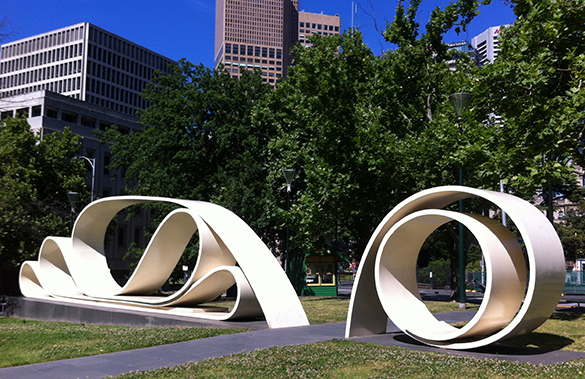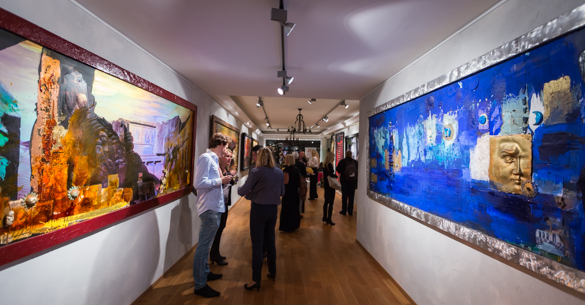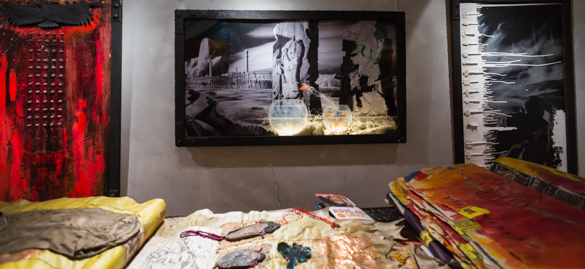It is the last days of a pleasant, long Indian summer. The late October air is cool and crisp; the sun is watery-bright. I walk up the long gravel drive to the imposing musée Ariana. The reception, as always, is polite and helpful. Once again, a surprise awaits me at Switzerland’s principal ceramic and glass museum: Jean Marie Borgeaud’s “Terre au Corps” exhibition. If you think that ceramics is somehow light on impact, visit this exhibition and be prepared to change your mind.
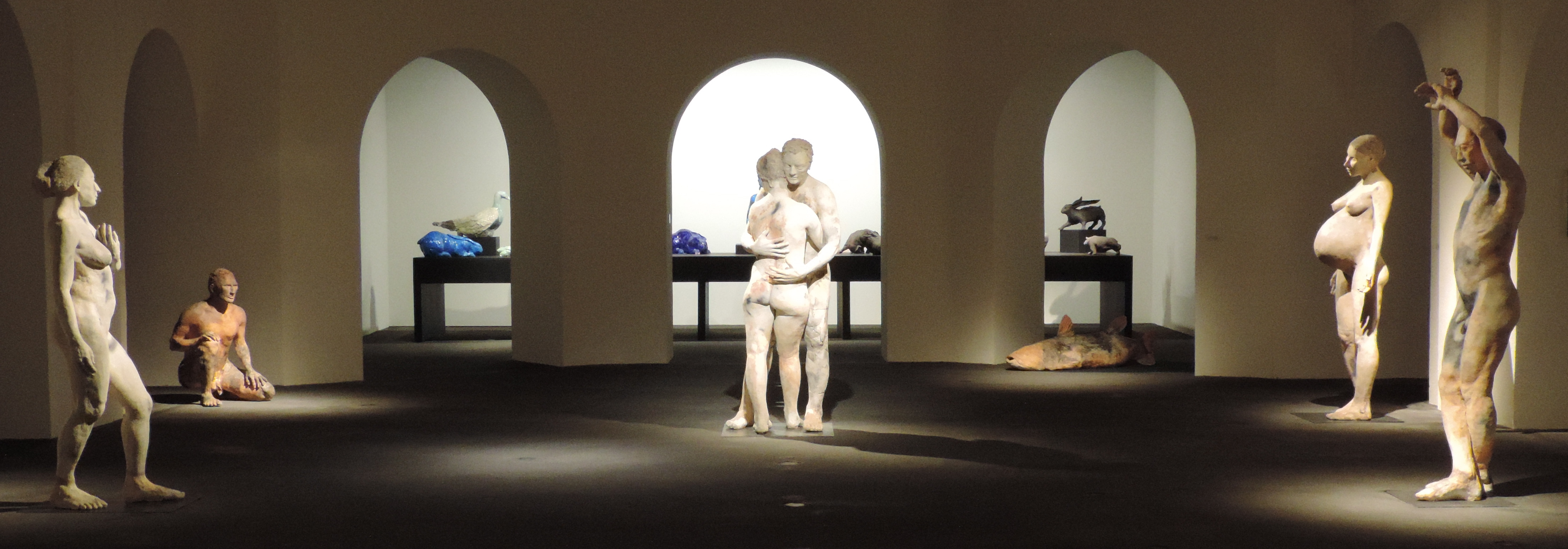
The centrum of the “Terre au Corps” exhibition
On meeting Jean-Marie Borgeaud, I note a ready, boyish smile. He looks one-hundred per cent art teacher. He talks quietly and evenly. He is tolerant of and listens to those of lesser talent. His life-drawing classes in Carouge are popular. He lives, works and breathes the human form; he uses ceramics to lay it bare, in both anatomical and visceral senses. His work comes from the gut and appeals likewise. Unsurprisingly he is considered a leading contemporary ceramicist meriting such an extensive exhibition – taking the whole basement level – at the Airiana. The startling variety of work covers nearly twenty years; I find the sad, the grotesque, the tragic, the touching, the primitive and the very beautiful.
Already in the centrum of this exhibition, my senses start to fragment.
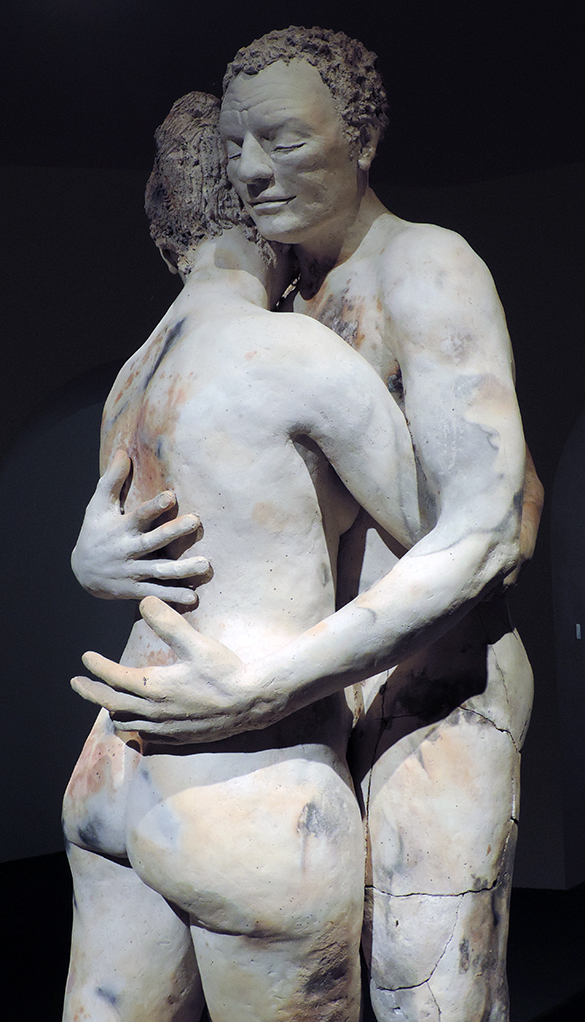
“Couple” 2006, Stoneware, low-temperature woodfiring
The centre-piece is, at first glance, simply a couple embracing. I walk around this work. There is drama off-stage. With eyes lightly closed, he seems to be assessing some mental weight with that left hand. With his right hand, he presses her against him.
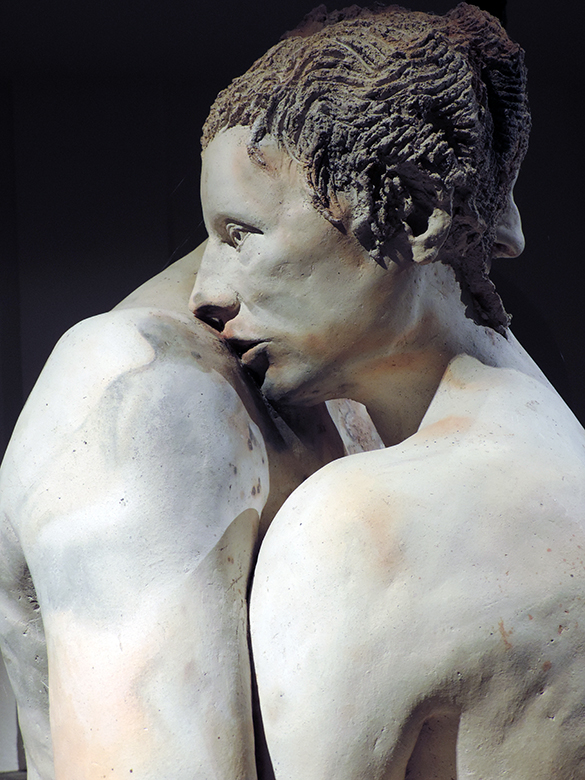
“Couple” 2006, Stoneware, low-temperature woodfiring
By contrast, she seems anxious; devasted even. Her lips rest lightly on his shoulder. Her gaze is distant. Something has befallen her and therefore something has befallen them. Jean-Marie Borgeaud has created an ambience of palpable disquiet within the couple but with the certainty that whatever the storm, he and she will ride it out together.
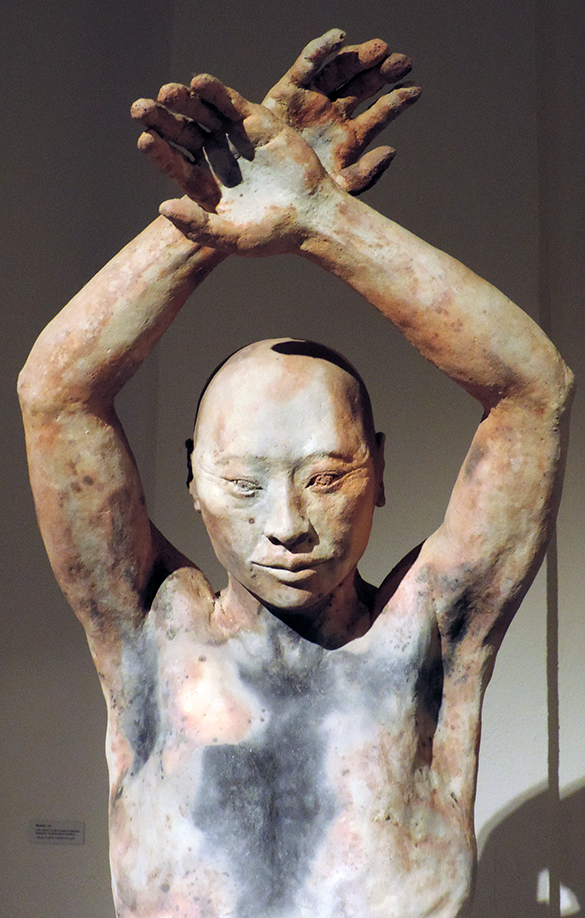
“Mandula” 1997, Stoneware, low-temperature woodfiring
Many of the figures in this exhibition have faces that are clearly African or Asian. Next to “Couple” is “Mandula.” I hope Jean-Marie Borgeaud forgives me but the hands held up in submission and the black residue from the firing on the skin of this Asian man leaves only one word in my mind. Hiroshima!
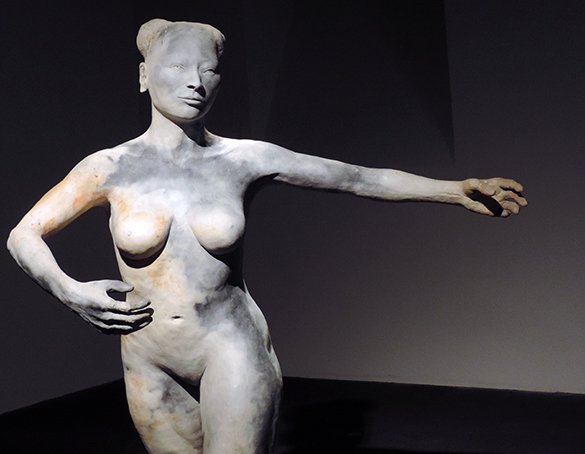
“Clothilde,” 1998, Stoneware, low-temperature woodfiring
These works are life-size. I try to imagine how they are shaped and then fired. The technical challenges must be considerable. Perhaps I can visit the Borgeaud studio sometime?
In a far corner of the exhibition, I find Clothide. She waltzes by herself. Has she lost her partner, Mandula? They are from the same era.
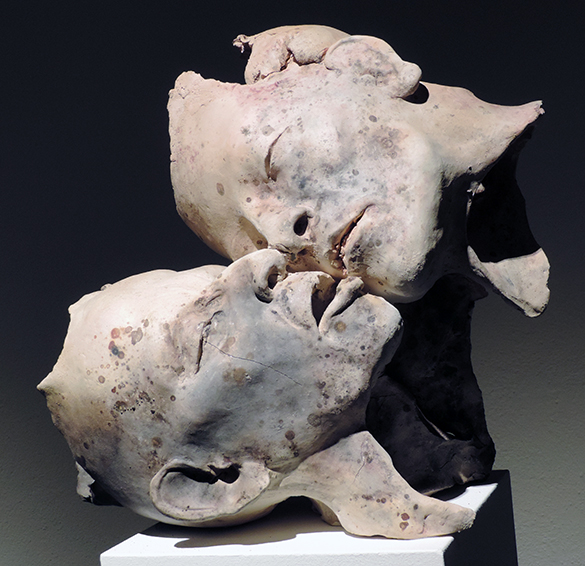
Untitled and undated. Stoneware, low-temperature woodfiring
Perhaps these masks tell of the reunion of Mandula and Clothilde in some fragmented after-life?
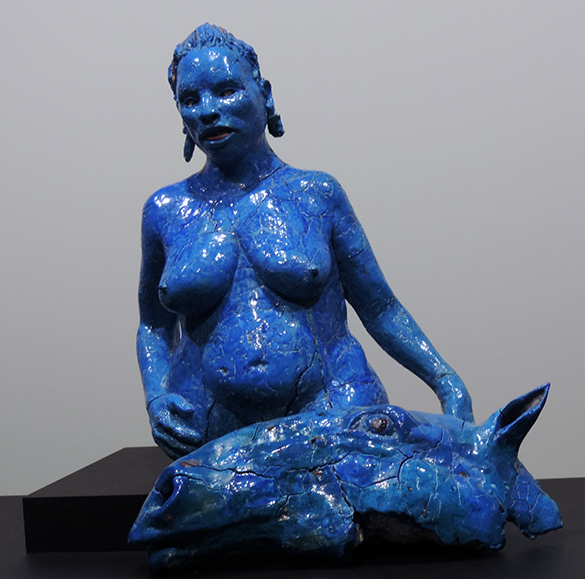
Untitled, undated
Not all Jean-Marie Borgeaud’s work is dedicated to the notion of “couple” nor does he confine himself to stoneware and low-temperature woodfiring. He also works with ceramic glazes. Behind “Couple” in an alcove, is an untitled blue-glazed piece. The bust is clearly of an African woman. Beneath her is a horse’s head. The glaze is pleasingly cracked. The blue is vivid. The whole is mesmerising.
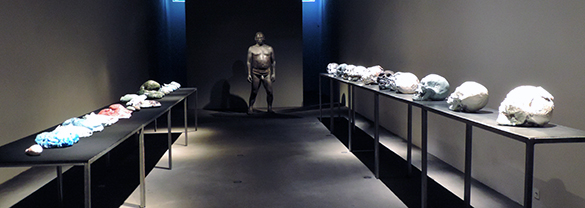
The Arikara room with “Arikara,” 2012, Manganese clay
The wing of the exhibition that houses “Arikara” is testament to its bold lay-out. He, Arikara, stares at me from the far end of a subtly lit room. He is Asian, naked, squat and ferocious. Ranged on his right are gaily coloured ceramic piles of entrails. In parallel, aligned on his left, like the bounty of some ghastly massacre, are skulls. The form of the skulls are primitive in the extreme: neanderthal or australopithic may be. The feeling of age and decay are accentuated by fissures and crumbling. If you do not feel disquiet in this room, you are a tough nut indeed!
However, within the line of bizarre, cracked, grotesque skulls is the jewel of the exhibition.
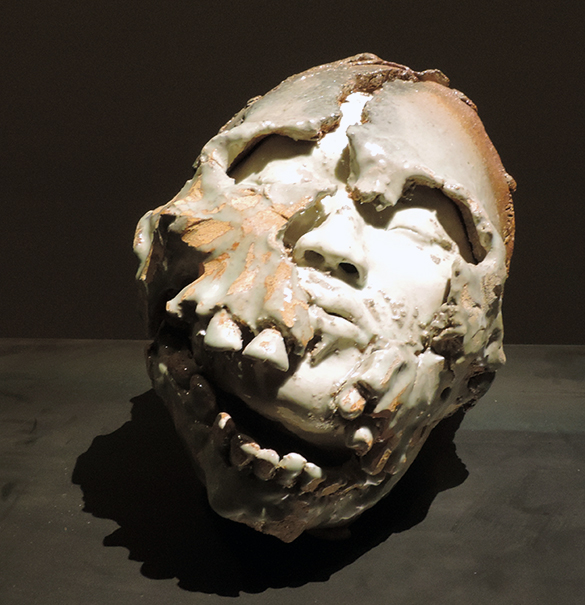
From one of the skulls, a person emerges. The mask-like maxilla and orbits are burst open by the swelling of a sublime, smooth and young face. It is a novel experience to encounter a work that generates both revulsion and hope in equal measure. It is an image that stays with me for days.
Other visitors chat quietly. I wonder if they are moved and gripped by these works as I am. I climb the stairs and walk out through the Ariana’s massive dark oak doors. I have difficulty marshalling my thoughts. I am dazzled and disorientated more by the exhibition than by the sun.

